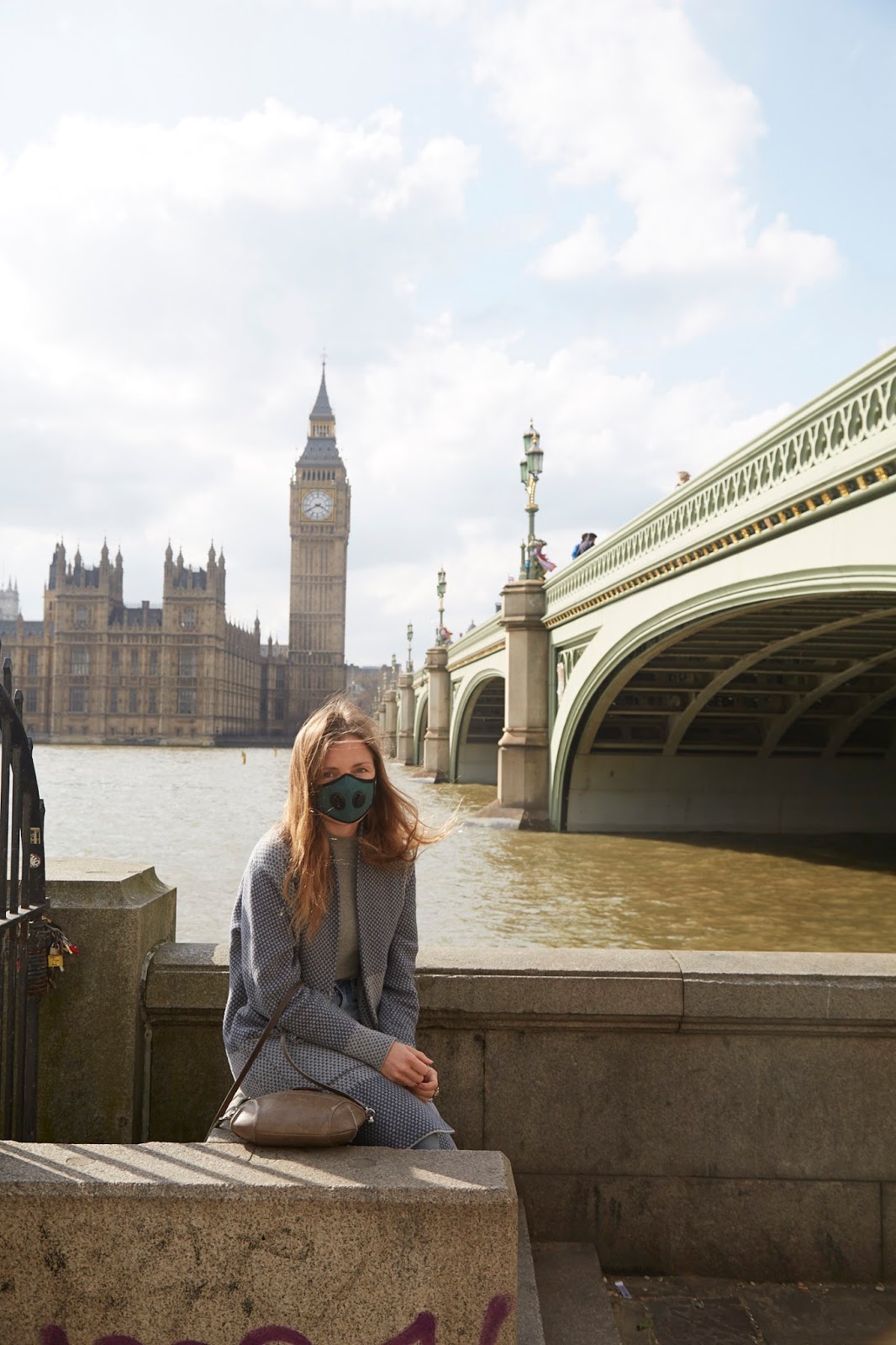A version of this article previously appeared on Leotie Lovely.

Wearing a pollution mask in the heart of London.
A few months ago, while up visiting my family in London, I saw an advertisement on the tube that caught my attention. It was a picture of a father and his child, a child who was around the same age as my three-year-old nephew, who at that time sat beside me, mimicking the announcer’s voice as she informed the passengers of the upcoming stop.
The ad said something to the effect that if you live near a busy road in London, exposure to air pollution can be equivalent to smoking 15 – 30 cigarettes daily, depending on the heat of the day and which road it is. It indicated that research on the effects of exposure for children has shown a reduction in lung growth to those exposed, and for both adults and children, long-term health issues, as well as premature death.
The cause of the air pollution is nitrogen dioxide produced from diesel engines, and as it turns out, London has the highest recorded level of nitrogen dioxide of any capital city in Europe. In fact, the level of nitrogen dioxide from diesel traffic exceeds the legal limit set by the World Health Organization of 40µg/m3 (micrograms per cubic meter of air). Yet because the harm is invisible, there’s very little public pressure to kill the culprit, despite 9,400 deaths in London alone caused by the polluted air.
Worldwide, according to the Guardian, outdoor air pollution kills 3.3 million people, more than HIV, malaria, and influenza combined. In France, fine-particle air pollution has caused approximately 48,000 premature deaths a year.
Living Here
When I first moved back to Paris from Texas, we lived in an apartment on the 9th floor, not far from the Périphérique highway which rings around Paris. We had two terraces, one on each end of our house, and we left the doors open daily, letting the air circulate throughout. I noticed almost immediately that each morning when I woke it was hard to swallow, my throat was dry and sore, my eyes were dry and itchy, and I sneezed a whole lot more than I ever had before.
I ignored it for months and only noticed it reduce when we moved to a new neighborhood which happens to be surrounded by one of the lushest and greenest parks Paris has to offer, one which sequesters the majority of the city’s carbon.
After seeing the Greenpeace ad, I was inspired to finally take action and contacted my friend Mirela who writes the Green Lifestyle blog, Urban Meisters to ask her opinions. I had seen a few articles she’d written on air pollution, one about an app, called Plume Air Report, which indicates the level of air pollution in your city each day. The other, about a brand called VOG MASK which makes a “fashionable” pollution mask. I downloaded the app and wrote VOG Mask, asking if I could test out their product, and upon its arrival, started using the Plume Air Report every morning, and carrying the pollution mask around in my bag for prolonged bike rides and outdoor runs on days the app indicated the air was unsafe.
Unsurprisingly, the painful throat situation went away.
What Is Air Pollution?
Air pollutants are substances in the air that can have negative effects on human and ecosystem health. They are made up of solid particles, liquid droplets, or gasses and divided up into two types. Primary pollutants are produced from carbon monoxide gas from motor vehicle exhaust, or sulfur dioxide released from factories, while secondary pollutants are a result of primary pollutants reacting and interacting in the air. The size of the particles produced is directly linked to their potential for causing health problems. Small particles are the worst as they bypass the body’s natural defenses and can enter your lungs and bloodstream.
How Does It Affect Your Health?
Children and babies are the most affected due to relatively higher breathing and metabolic rates as well as developing lung and immune system. For everyone, air pollution increases the risk of stroke, heart disease, lung cancer, chronic/acute respiratory diseases, and premature death.
Solutions
Put simply, for most cities, the reduction of motor vehicles, specifically the ones running on diesel is key. In Paris, all public transport is free when the smog kicks off, and the Velib bicycles and Autolib electric cars are also made free to help deter people from driving. They also alternate the days you’re allowed to drive, depending on whether your number plate is odd or even. Which has, in turn, helped to reduce the cars on the road and thus overall pollution. But they still have a long way to go.
Read more at Leotie Lovely.
Did you live in a big city and experience negative effects from air pollution? Have you ever tried a pollution mask?
Related: Can Luxe Farm-To-Face Beauty Detox Your Skin From Pollution? I Tried It
Noise Pollution Is A Top Cause Of Health Issues, For Real. 6 Ways To Get Quiet
Why Pollution Damages Skin and What You Can Do about It
Get more like this–sign up for our newsletter for exclusive inspirational content!
__
Photo: Shane Woodward




